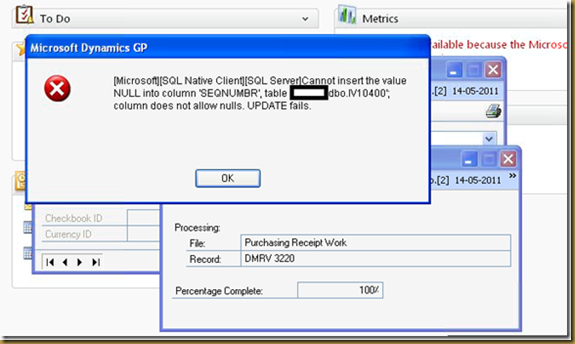One of my clients is using Analytical Accounting to link cost centers with expense accounts, and therefore they are using the Analytical Accounting budget to specify a budget for both Projects (CAPEX) and to link their expense accounts with cost centers and specify a budget for each cost center on each expense account to manage their OPEX.
While loading the budget into the system, the user reported that he getting the below error:
Error converting data type varchar to numeric
Searching around the blogosphere and the partner source, I notice the same issue with version 8.0 and 9.0, but the customer is using version 2010 R2!
Performing deep investigations on the issue returned that one of periods contained a blank line instead of “ZERO”!! which been a tough task to be found through 6,000 lines and 12 periods!
Hope you get rid of this if found!
Regards,
--
Mohammad R. Daoud MVP - MCT
MCP, MCBMSP, MCTS, MCBMSS
+962 - 79 - 999 65 85
me@mohdaoud.com
www.mohdaoud.com




